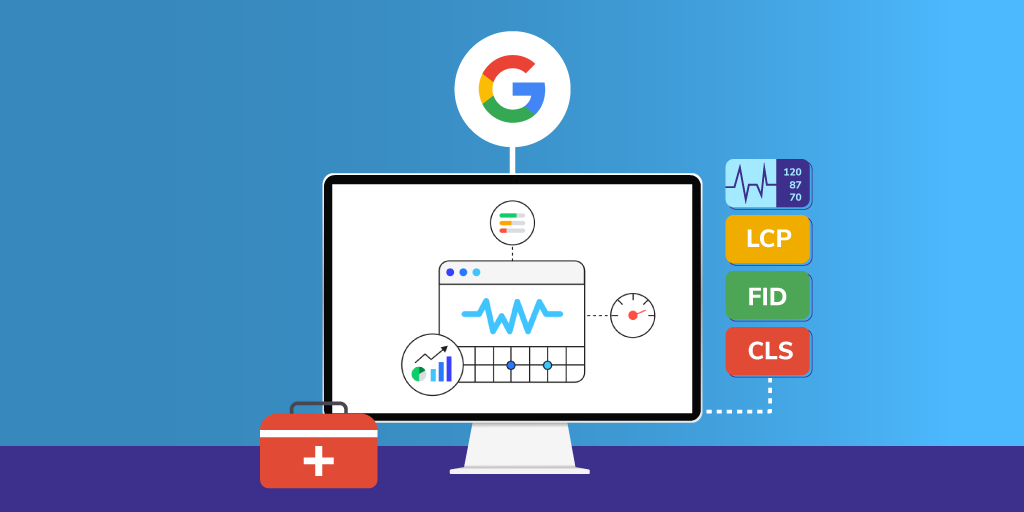
Explore the significance of core web vitals in optimizing website performance and user experience.

What are Core Web Vitals?
Core Web Vitals are a set of specific website performance metrics that Google considers crucial for delivering a good user experience. They include three key aspects: loading, interactivity, and visual stability.
Loading refers to the time it takes for a webpage to fully load and become visually stable. It is measured by the Largest Contentful Paint (LCP) metric, which aims to capture the time it takes for the main content of a page to load.
Interactivity measures how responsive a webpage is to user input. This is evaluated by the First Input Delay (FID) metric, which calculates the time between a user’s first interaction and the browser’s response.
Visual stability measures how much the content of a webpage shifts or moves unexpectedly. It is measured by the Cumulative Layout Shift (CLS) metric, which quantifies the amount of unexpected layout shifts that occur during the page’s loading process.
By understanding these core web vitals, website owners and developers can assess and improve the performance of their webpages to provide a better user experience.
Why are Core Web Vitals Important?
Core Web Vitals are important because they directly impact the user experience of a website. When a webpage loads quickly, responds promptly to user interactions, and remains visually stable, visitors are more likely to stay engaged and satisfied with their browsing experience.
In addition to enhancing user experience, core web vitals also play a significant role in search engine optimization (SEO). Google has announced that starting from May 2021, core web vitals will become ranking factors in search results. Websites that prioritize and optimize their core web vitals have a higher chance of ranking well in search engine results pages (SERPs).
Therefore, by focusing on improving core web vitals, website owners can not only enhance user satisfaction but also increase their visibility and organic traffic through improved search engine rankings.
How to Measure Core Web Vitals
Measuring core web vitals requires the use of various tools and techniques. Google provides several tools that can help website owners and developers assess their webpages’ performance in terms of core web vitals.
One such tool is Google PageSpeed Insights, which provides insights and recommendations for improving webpage performance. It shows the LCP, FID, and CLS scores for a webpage, along with suggestions for optimization.
Another tool is Google Search Console, which provides a Core Web Vitals report. This report gives an overview of a website’s performance in terms of core web vitals, highlighting areas that need improvement.
Website owners can also use the Chrome User Experience Report (CrUX), which offers real-world user experience data collected from millions of websites. This data can help identify areas where core web vitals can be improved.
By utilizing these tools and analyzing the metrics they provide, website owners and developers can gain valuable insights into their webpages’ performance and take necessary steps to optimize core web vitals.
Improving Core Web Vitals
Improving core web vitals requires a combination of technical optimizations and best practices. Here are some strategies to enhance core web vitals:
– Optimize server response times by using a reliable hosting provider and caching mechanisms.
– Compress and optimize images to reduce their file size without sacrificing visual quality.
– Minify and bundle JavaScript and CSS files to reduce their download size and improve loading speed.
– Eliminate render-blocking resources that prevent the webpage from loading quickly.
– Prioritize visible content to ensure that the main content of a webpage appears quickly.
– Optimize font loading to prevent layout shifts caused by late-loading fonts.
– Reduce the impact of third-party scripts and widgets by deferring their loading or minimizing their usage.
By implementing these optimizations and following best practices, website owners can significantly improve their webpages’ core web vitals and provide a better user experience.
Impact of Core Web Vitals on SEO
The introduction of core web vitals as ranking factors in Google’s search algorithm signifies their importance in SEO.
Websites that prioritize and optimize their core web vitals have a higher chance of ranking well in search engine results pages (SERPs). This means that by improving core web vitals, website owners can increase their visibility and organic traffic.
Moreover, core web vitals align with Google’s overall goal of delivering a better user experience. By promoting websites that provide fast-loading, responsive, and visually stable webpages, Google aims to enhance the overall quality of search results and satisfy user expectations.
Therefore, website owners should consider core web vitals as an essential aspect of their SEO strategy, as it can directly impact their search rankings and online visibility.
Leave a comment